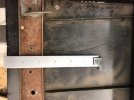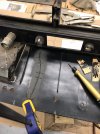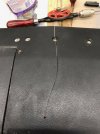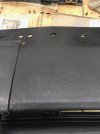Dean Jenkins
Promoted Users
3M makes a 2 part. It is expensive and you need the special 2 part gun.I have been using the Lord Fusor 803 DTM which is a 1 part sealer.
What 2 part sealers are you using?
I've just been using 1 part. All of them that I looked at say it is paintable right away on the tech sheet.
I talked to Barry and he recommended waiting longer, especially if it is put on thick, like in gap areas.
I put it on and then moved on to other areas of the car, then came back 3-4 days later and painted over it with epoxy.




